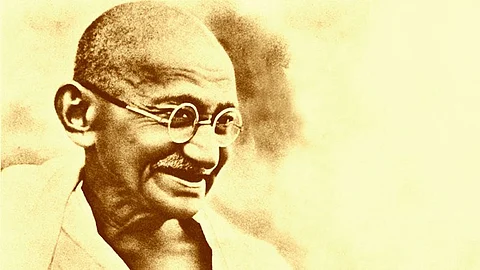
- Home
- Live Blog
- Breaking News
- Top Headlines
- Cities
- NE News
- Sentinel Media
- Sports
- Education
- Jobs

The month of August will always be remembered as one of the most significant and memorable months in the history of the emergence of modern India. Way back in 1942, when World War II had reached a very crucial stage with Japan fast marching towards India, Britain sought support of leaders of the freedom movement. Gandhiji, however, opposed the participation of Indians without London’s clear commitment to granting independence and launched the ‘Quit India’ movement, demanding an end to British rule. Since this announcement was made on August 8 in a special session of the National Congress in Mumbai, the day has since come to be remembered as ‘August Kranti Diwas’. As hundreds of leaders across the country were arrested, people at the local level took up various programmes in consonance with Gandhiji’s call. In Assam, September 20 was fixed as the date when non-violent satyagrahis would hoist the tricolour atop all government buildings, including police stations. As a section of freedom fighters turned a bit extremist, they launched a campaign to disrupt the communication system, including roads, railways and telegraph. The colonial government decided to crush this two-pronged campaign with an iron fist. This led to a series of atrocities and repression, including indiscriminate firing, arrests, lathi charges, and the imposition of collective fines and confiscation of property. A number of satyagrahis were thus killed across Assam, while hundreds sustained injuries for life. The worst incident took place at Dhekiajuli, with police firing causing death to at least twenty persons. While a twelve-year-old girl named Tileswari Baruah, who had accompanied her satyagrahi uncle, was also killed in this incident, it took more than seventy-five years for the nation to wake up and recognise her as the youngest martyr of India’s anti-colonial struggle. More striking is the fact that a sanyasi and a beggar too had lost their lives in the Dhekiajuli firing, thus becoming martyrs for this sacred land. Taking the entire anti-colonial movement into consideration since the first uprising led by Gomdhar Konwar within two years of British annexation of Assam in 1826, it is indeed a long history of struggle to protect the motherland. Unfortunately, in Assam very little work has been done to document the stories of those struggles and sacrifices. Even after 78 years of India attaining independence, no comprehensive book or research work is available about how the people of Assam had contributed towards this great movement. In contrast, the hill states of Meghalaya, Manipur, Arunachal Pradesh and Mizoram have done considerably appreciable work by carrying out wonderful research – be it at the institutional or government level, or by certain individual scholars.